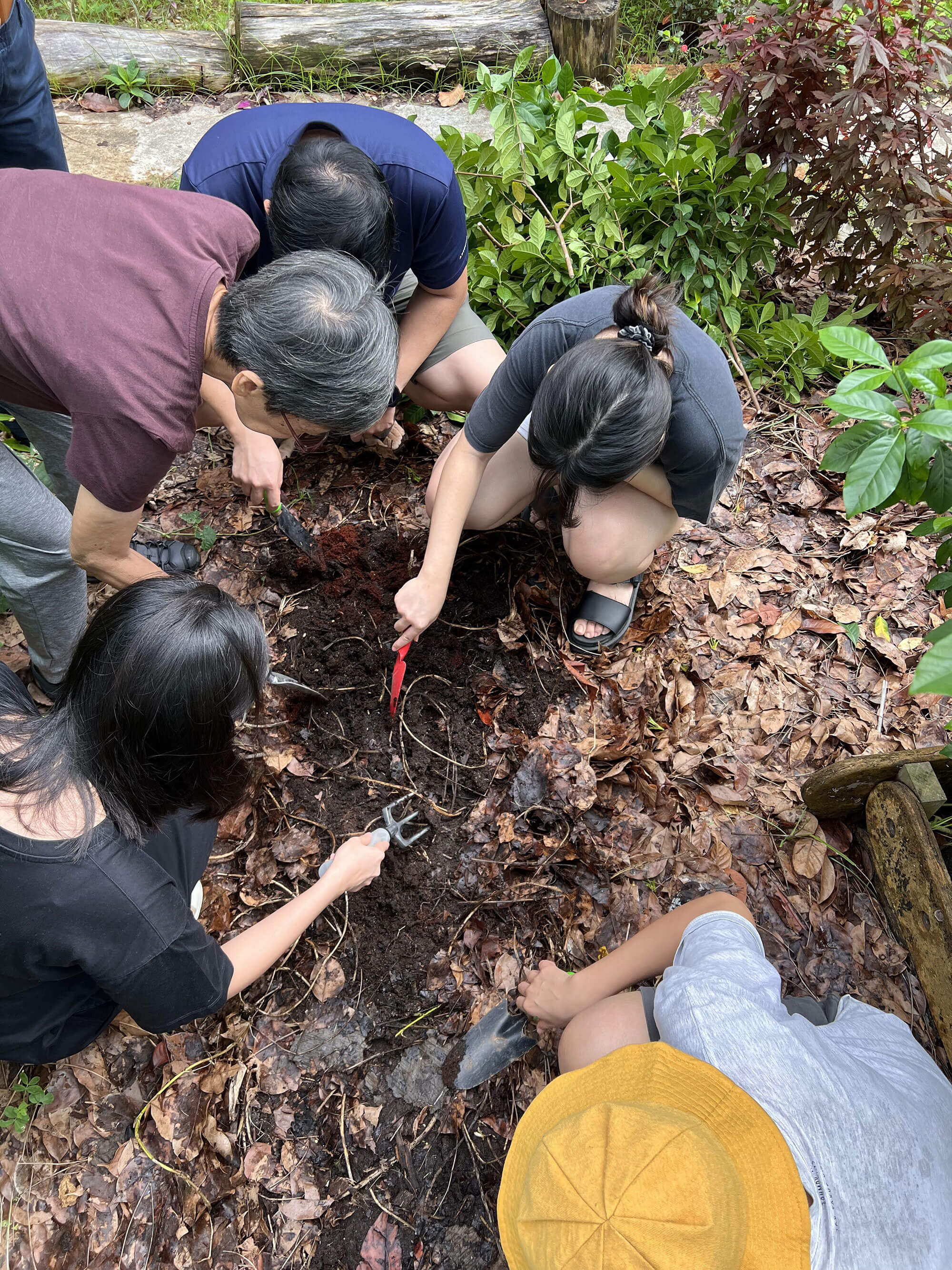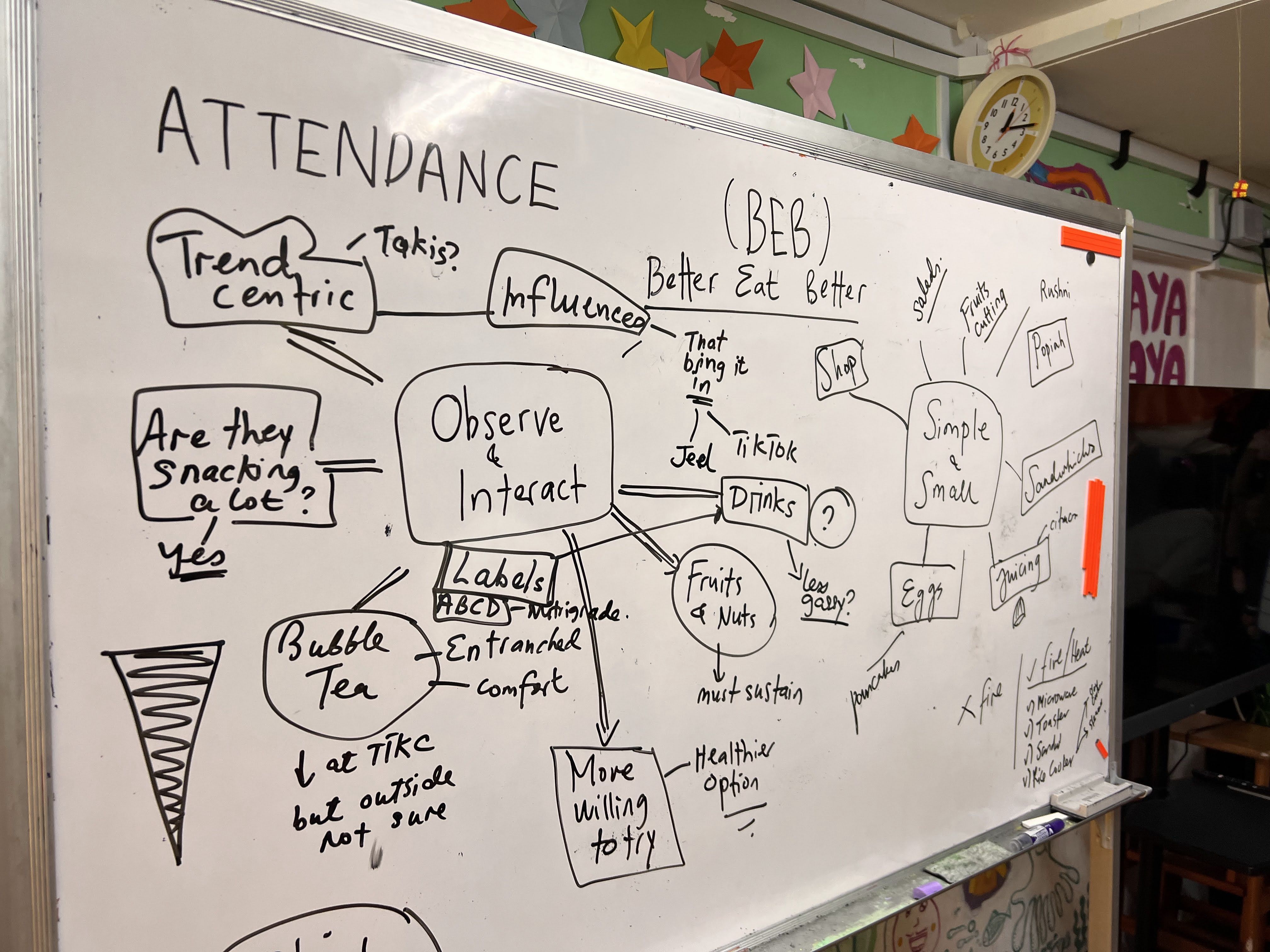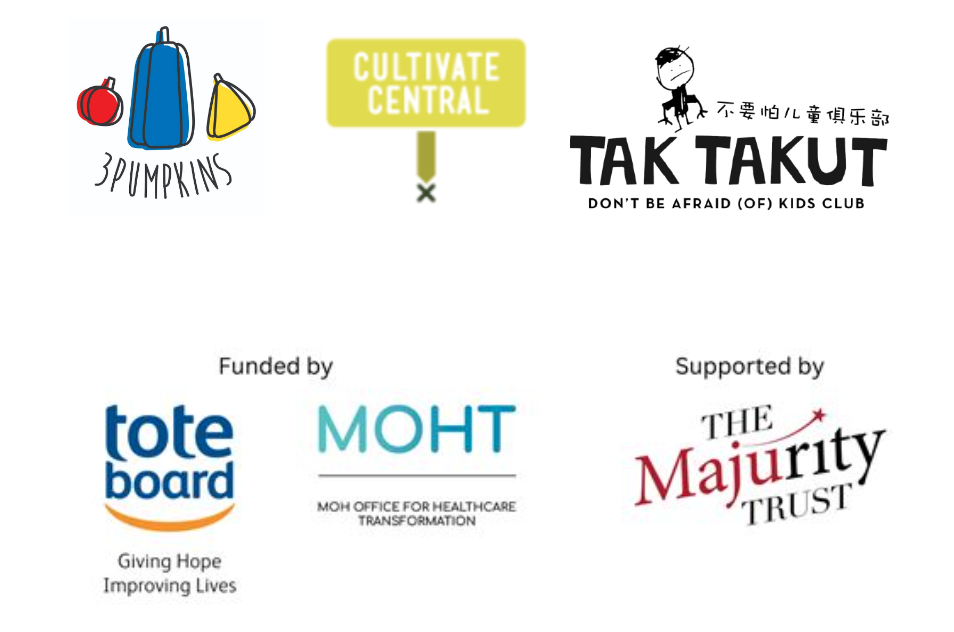
- Jul 21, 2023
- Nova Nelson
Building a Site Specific Health Movement - A Permaculture Designer's Journey
Update 1: Better Eat Better Movement
A collaborative children’s food health project
How it All Began…
In 2022, we embarked on a journey to practise permaculture design with the Tak Takut Kids Club (TTKC) by 3Pumpkins. As part of the year’s Singapore HeritageFest, we co-created an explorative engagement children’s community garden and art installation known as Kebun Rasa Sayang. The idea was to understand and contextualise what gardening means for the heritage and culture of the residents at the Boon Lay Drive neighbourhood.
 A thriving Kebun Rasa Sayang.
A thriving Kebun Rasa Sayang.
 Community members learning about soil and planting vegetables.
Community members learning about soil and planting vegetables.
Permaculture Food Gardens for Social Change
The community garden very quickly presented itself as a great opportunity to meaningfully address some of the social and environmental challenges that children in the neighbourhood were facing, particularly with regards to food and health. We wanted to generate a positive impact by enabling better food habits, choices and health outcomes amongst children living in the area. And so together with 3Pumpkins we initiated the Better Eat Better (BEB) movement.
Our permaculture knowledge and practice guided the systems thinking, programme and space reset and design, food systems content and engagement process on the ground. The TTKC team worked on making the engagements, experiments and experiences happen frequently, consistently and meaningfully on the ground.
This is the beauty of permaculture food gardens and why we are always excited to introduce and build more in cities - it inevitably leads to impactful and sincere collaborations and transcends gardening!
 Reflections and learning to observe food choices made as a community.
Reflections and learning to observe food choices made as a community.
Precipitating Permaculture Principles on the Ground
There are about a dozen permaculture design principles. It is a design framework that can be applied in a variety of contexts from growing food on your balcony, to regenerating the environment or even building your own sustainable home. Permaculture design can also be applied when working with communities. This BEB project is an example of how we’ve been using permaculture design on a garden and kitchen programme to positively influence children's choices around food.
As we continue on in our journey with TTKC to help children make better food choices, I will periodically share more about how I’ve implemented permaculture principles beyond growing food and composting.
For a start, here are a couple of reflections on how permaculture design principles helped us kickstart the project in early 2023:
Permaculture Principle 1: Observe and interact. Understanding routines, aspirations, the flow of energy in spaces, function and form of spaces, challenges, interests, resources available, habits and norms.
We spent hours and days speaking to as well as cooking, gardening and engaging with the community and their space. We do this with much respect and to the rhythm and pace of the community. One of the important habits we observed in the community was the manner in which food donations were made to TTKC. As a non-profit working with children they received many well meaning food donations for children, but the donations often promoted poor food choices - sodas, candy, chips, fast food and biscuits. We had to mindfully shift this behaviour, educating donors with a healthy food wish list instead. And for all of us involved it was such a good reminder to donate with thought and care.
Permaculture Principle 7: Design from patterns to details. Working as a collective and community from the ground up to achieve major goals can be chaotic and complex. Patterns emerge from chaos. Patterns help us read the world around us better.
As permaculture designers, we use frameworks and tools to recognise patterns in nature, communities, and daily life. Through participatory action research, we've gained insights into the snack-eating patterns of the children we are working with, which has helped us create new patterns supporting healthier habits around food choices. If you want to shape a space or positively impact a community, then pattern literacy is vital.
I will keep sharing. I will keep talking about how we are using permaculture principles beyond growing food to building food commons. What does that mean? Tune in next month for my next update.
Want to continue getting updates on BEB? Join our newsletter list.
About Better Eat Better
The Better Eat Better movement aims to bring about a change in the ability of young persons to make better food choices. Through a combination of participatory action research (PAR), placemaking, education, social learning and social movement, permaculture design outfit and food commons practitioner Cultivate Central together with the non-profit 3Pumpkins who run the Tak Takut Kids Club (TTKC) initiated Better Eat Better to fully realise the potential a community garden & kitchen programme could play in bringing about better health outcomes in a community. This joint effort is targeted at children and youth aged 7 to 16 from vulnerable communities living in Boon Lay. The Better Eat Better movement project is funded by the Tote Board, MOHT (MOH Office for Healthcare Transformation) and supported by The Majurity Trust.

Stakeholders that initiated BEB and make it possible

Nova Nelson
I’m a Social Entrepreneur, Permaculture Designer, a gardening coach, content creator and educator. I started Cultivate Central as a solo enterprise. It started as a blog about my journey in Permaculture Design. It then evolved and grew into a small social enterprise. Today, I focus on creating regenerative food gardens, developing and delivering educational experiences, championing vermicomposting and building collaborative community programmes with organisations, corporates, developers and schools, with a small but talented team. I’m passionate about helping them embark on a journey of earth care centred on building regenerative food systems and cultures.
How did I find myself doing what I do? Read my story here.
Features
Cultivating Change EP #12: Discovering Regenerative Farming with the Orang Asli in Malaysia
What does it take to rebuild livelihoods, restore soil, and shift mindsets? EP #12: Discovering Regenerative Farming with the Orang As...
Cultivating Change EP#11: Building a Fairer Food Future Together Using Cooperatives
How can a grassroots co-op transform the food on your table—and the lives behind it? . EP#11: Meet Kongsi Co-op — Reimagining Food &...
- #COMMUNITIES
- #CULTIVATE FOOD
- #DESIGN
- #GARDENING WITH CHILDREN
- #PERMACULTURE
- #URBAN PERMACULTURE
